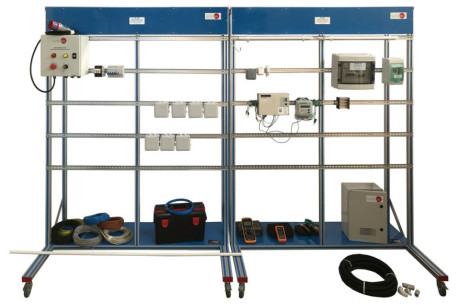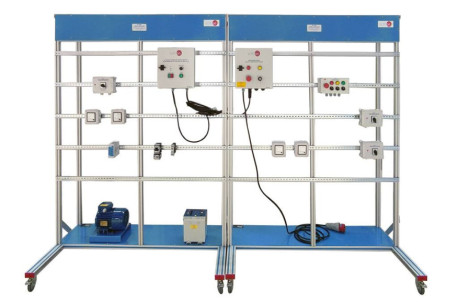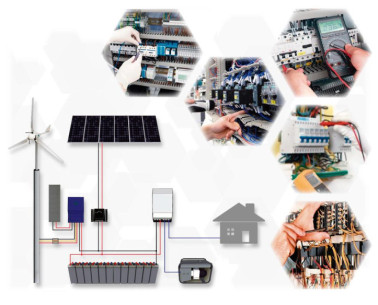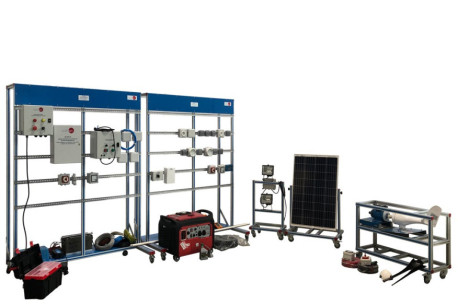- Início
- Produtos
- 1.- FÍSICA
- PROGRAMAS ACADÊMICOS
- EDUCAÇÃO TÉCNICA SUPERIOR
- ENGENHARIA DE ALIMENTOS
- ENGENHARIA TOPOGRAFÍCIA
- GEOLOGIA
- ENGENHARIA FLORESTAL
- ENGENHARIA AMBIENTAL
- ENGENHARIA ECOLÓGICA
- ENGENHARIA TÊXTIL
- ENGENHARIA PARA INDÚSTRIAS AGRÍCOLAS
- ENGENHARIA MECÂNICA
- QUÍMICA
- ENGENHEIRO QUÍMICA
- ENGENHARIA DE PROCESSOS
- ENGENHARIA GEOLÓGICA, MINERAÇÃO E PETRÓLEO
- CENTRO DE FORMAÇÃO DE PETRÓLEO
- ENGENHARIA NAVAL
- ENGENHARIA AGRÍCOLA
- ENGENHARIA ELETRÔNICA
- ARQUITETURA
- CIÊNCIA DA COMPUTAÇÃO E ENGENHARIA
- ENGENHARIA NUCLEAR
- ENGENHARIA AUTOMÁTICA
- ENGENHARIA ENERGÉTICA
- CENTRO DE FORMAÇÃO DE ENERGIA
- ENGENHARIA ELÉTRICA
- ENGENHARIA DE SISTEMAS
- ENGENHARIA AERONÁUTICA
- ENGENHARIA DO OCEANO E CIÊNCIAS MARINHAS
- FÍSICA
- ENGENHARIA INDUSTRIAL
- CENTRO INTERNACIONAL DE FORMAÇÃO TÉCNICA, DESENVOLVIMENTO E INVESTIGAÇÃO
- ENGENHARIA DE MATERIAIS
- ENGENHARIA METALÚRGICA
- ENGENHARIA CIVIL
- ENGENHARIA DE TELECOMUNICAÇÃO
- ENGENHARIA TÉRMICA
- ESCOLAS TÉCNICAS
- ELETRÔNICA
- COMUNICAÇÕES
- ELETRICIDADE
- CIÊNCIA DA COMPUTAÇÃO E ENGENHARIA
- TECNOLOGIA AUTOMOTIVA
- ENGENHARIA CIVIL
- MECÂNICA E FABRICAÇÃO
- MECÂNICA E METAL
- MECÂNICA DE FLUÍDOS
- REFRIGERAÇÃO E AR CONDICIONADO
- QUÍMICA INDUSTRIAL
- QUÍMICA
- TECNOLOGIA DE ALIMENTOS
- AGRICULTURA
- INDÚSTRIA AGRÍCOLA
- MANUTENÇÃO
- MARÍTIMO E PESCA
- MANUTENÇÃO AERONÁUTICA
- INSTRUMENTAÇÃO E CONTROLE
- MEIO AMBIENTE
- TECNOLOGIA
- TECNOLOGIA DA CONSTRUÇÃO
- TECNOLOGIA ELETROMECÂNICA
- TECNOLOGIA DE DESIGN ESTRUTURAL
- TECNOLOGIA DE PRODUÇÃO INDUSTRIAL
- TECNOLOGIA DA INFORMAÇÃO
- CONTROLE DE QUALIDADE
- TECNOLOGIA DE SISTEMAS DE ENERGIA
- TECNOLOGIA MINERAL E PETROLÍFERA
- TECNOLOGIA DE GÁS NATURAL
- ENERGIAS RENOVÁVEIS
- TECNOLOGIA DE TELECOMUNICAÇÕES
- TECNOLOGIA MECÂNICA
- TECNOLOGIA EÓLICA
- TECNOLOGIA NUCLEAR
- TECNOLOGIA DE CONTROLE DE PROCESSOS
- TECNOLOGIA DE SERVIÇOS GERAIS
- TECNOLOGIA DE LABORATÓRIO
- AUTOMAÇÃO E MECATRÔNICA
- TRANSPORTE E LOGÍSTICA
- EDUCAÇÃO TÉCNICA SUPERIOR
- 2.- ELETRÔNICA
- 3.- COMUNICAÇÕES
- 4.- ELETRICIDADE
- 5.- ENERGIA
- 5.1.- SMART GRIDS E SISTEMAS DE POTÊNCIA
- 5.2.- MICRO-REDES
- 5.3.- ENERGIAS RENOVÁVEIS
- 5.3.1.- ENERGIA SOLAR FOTOVOLTAICA
- 5.3.2.- ENERGIA SOLAR TÉRMICA
- 5.3.3.- ENERGIA EÓLICA
- 5.3.4.- ENERGIA MARINHA
- 5.3.5.- ENERGIA GEOTÉRMICA
- 5.3.6.- ENERGIA HIDRÁULICA
- 5.3.7.- BIOCOMBUSTÍVEIS
- 5.3.8.- SISTEMAS DE ARMAZENAMENTO
- 5.3.9.- CÉLULAS A COMBUSTÍVEL DE HIDROGÊNIO
- 5.3.10.- TURBINAS A VAPOR E CICLOS ORGÂNICOS RANKINE
- 5.3.11.- OUTROS SISTEMAS NÃO CONVENCIONAIS
- 5.4.- ENERGIAS CONVENCIONAIS
- 5.5.- ARMAZENAMENTO DE ENERGIA
- 5.6.- ALTA TENSÃO E SISTEMAS ELÉTRICOS DE PROTEÇÃO
- 5.7.- INSTALAÇÕES E MANUTENÇÃO
- 6.- MECATRÔNICA E AUTOMAÇÃO
- 7.- MECÂNICA
- 8.- MECÂNICA DE FLUIDOS
- 9.- TERMODINÂMICA E TERMOTÉCNICA
- 9.1.- FUNDAMENTOS E CONCEITOS BÁSICOS DE TERMODINÂMICA
- 9.2.- VENTILAÇÃO, CALEFAÇÃO, AR CONDICIONADO E ÁGUA QUENTE SANITÁRIA
- 9.3.- BOMBAS DE CALOR
- 9.4.- REFRIGERAÇÃO
- 9.5.- SISTEMA DE TUBULAÇÃO HIDRÁULICA TÉRMICA
- 9.6.- TRANSFERÊNCIA DE CALOR
- 9.7.- TROCADORES DE CALOR
- 9.8.- MÁQUINAS TÉRMICAS
- 9.9.- MOTORES DE COMBUSTÃO INTERNA
- 9.10.- INSTALAÇÕES E MANUTENÇÃO
- 10.- CONTROLE DE PROCESSOS
- 11.- ENGENHARIA QUÍMICA
- 11.1.- OPERAÇÕES UNITÁRIAS
- 11.1.1.- FLUIDIZAÇÃO
- 11.1.2.- EVAPORAÇÃO
- 11.1.3.- EBULIÇÃO
- 11.1.4.- DESTILAÇÃO E CRAQUEAMENTO
- 11.1.5.- EXTRAÇÃO
- 11.1.6.- DIFUSÃO
- 11.1.7.- SECAGEM E ARREFECIMENTO
- 11.1.8.- ABSORÇÃO E ADSORÇÃO
- 11.1.9.- TROCA IÔNICA E CORROSÃO
- 11.1.10.- CRISTALIZAÇÃO E PIRÓLISE
- 11.1.11.- FILTRAGEM, SEDIMENTAÇÃO E MISTURA
- 11.1.12.- TRATAMENTO DE SÓLIDOS
- 11.2.- REATORES QUÍMICOS
- 11.1.- OPERAÇÕES UNITÁRIAS
- 12.- TECNOLOGIA DE ALIMENTOS E ÁGUAS
- 13.- MEIO AMBIENTE
- 14.- ENGENHARIA BIOMÉDICA
- 14.1.- BIOMECÂNICA
- 14.1.1.- KITS DE FUNDAMENTOS DE MECÂNICA
- 14.1.2.- MÁQUINAS SIMPLES
- 14.1.3.- ESTÁTICA E DINÂMICA
- 14.1.4.- VIBRAÇÕES E OSCILAÇÕES
- 14.1.5.- TRIBOLOGIA (ATRITO, DESGASTE, LUBRIFICAÇÃO)
- 14.1.6.- MECÂNICA DE ESTRUTURAS
- 14.1.7.- FOTOELASTICIDADE E EXTENSOMETRIA
- 14.1.8.- ENSAIOS MECÂNICOS
- 14.1.9.- ENSAIOS ACÚSTICOS E TÉRMICOS
- 14.2.- ELETRÔNICA BIOMÉDICA
- 14.3.- EQUIPAMENTO BIOMÉDICO
- 14.1.- BIOMECÂNICA
- ACESSÓRIOS DE LABORATÓRIO
- PLANTAS PILOTO PERSONALIZADAS
- MÓDULOS
- EXPANSÕES
- LABORATÓRIOS
- Linhas de Negócio
- Tecnología
- Repositorio de materiales
- Sobre nós
- Notícias
- Contacte-nos
The Importance of Hands-On Training in Electricity for Universities and Companies
The Importance of Hands-On Training in Electricity for Universities and Companies
Electricity is a form of energy resulting from the movement of electrons through a conductor. This physical phenomenon is essential for the operation of a wide variety of devices and systems we use daily, from household appliances to complex industrial systems.
Electricity can be generated from various sources such as hydroelectric plants, solar energy, wind energy, thermal power, and nuclear power. Once generated, this energy is distributed through electrical grids for consumption. In technical terms, electricity is measured in volts (V), representing electrical potential difference; amperes (A), measuring electrical current; and watts (W), indicating electrical power consumed or produced.
.png)
2. Importance of Practicing and Researching with Training Equipment Before Dealing with Electrical Installations.
Practicing and researching with training equipment is crucial before engaging with real electrical installations for several reasons. Firstly, while electricity is essential and beneficial, mishandling it can be dangerous. Exposure to high voltages can cause severe damage or even fatalities. Therefore, it is vital for students and professionals to gain in-depth, hands-on knowledge in a controlled and safe environment.
Secondly, using training equipment allows students to practically experience the theoretical concepts learned in the classroom. This not only enhances their understanding but also aids in knowledge retention. Practical experience is integral to electrical engineering education as it allows students to see how theoretical principles apply in real-world situations.
Moreover, training equipment enables students to make mistakes and learn from them without the serious consequences that could occur in a real-world setting. This ability to experiment and learn safely is invaluable for developing critical skills and confidence in their abilities.
.png)
3. Why It's Important and How It Can Enhance Education When Installing Specialized Practice Equipment in Electricity.
Installing specialized practice equipment in electricity at educational institutions can significantly transform students' learning experiences. Here are some reasons why it's important and how it can enhance education:
a. Hands-On and Applied Learning
Theory is fundamental, but hands-on practice is essential for truly understanding electrical concepts. Specialized equipment allows students to apply what they have learned tangibly, resulting in deeper understanding and increased knowledge retention.
b. Simulation of Real-World Scenarios
Training equipment enables the simulation of electrical scenarios and problems that students may encounter in the real world. This prepares students to tackle professional challenges with confidence and competence.
c. Development of Technical Skills
Using training equipment helps students develop specific technical skills such as circuit installation, measurement of electrical parameters, and fault identification. These skills are crucial for any career in electrical engineering.
d. Safety
Learning in a controlled environment reduces the risk of accidents. Training equipment is designed to be safe and educational, allowing students to explore and experiment without fear of hazardous consequences.
e. Innovation and Creativity
Students who have access to training equipment are better positioned to innovate and develop new solutions to electrical problems. The ability to experiment and test new ideas in a safe environment fosters creativity and innovation.
.png)
4. Home and Building Automation - What They Are and Their Characteristics.
Home Automation (Domotics)
Home automation refers to the automation of homes through electronic and computerized systems that control functions such as lighting, climate control, security, and appliances. Home automation systems enable users to manage their homes efficiently and conveniently, often through mobile devices or voice assistants.
Characteristics of Home Automation:
- Remote Control: Home automation systems allow users to control their homes from anywhere using mobile applications.
- Automation: Functions like lighting and climate control can be programmed to adjust automatically based on the time of day or user preferences.
- Enhanced Security: Home automation systems include cameras, sensors, and alarms that can be monitored and controlled remotely.
- Energy Efficiency: Home automation helps reduce energy consumption by optimizing the use of resources such as electricity and heating.
.png)
Building Automation (Inmotics)
Building automation, on the other hand, refers to the automation of commercial or industrial buildings. Like home automation, building automation uses advanced systems to control and manage functions such as lighting, climate control, security, and energy management, but on a much larger scale.
Characteristics of Building Automation:
- Centralized Management: Building automation systems allow for centralized management and control of all building functions.
- Operational Efficiency: Building automation optimizes the operation of building systems, reducing operating costs and improving energy efficiency.
- Advanced Security: Automated buildings feature integrated security systems that include real-time monitoring, access control, and sophisticated alarm systems.
- Sustainability: Building automation promotes sustainable practices by optimizing resource use and reducing the building's environmental impact.
5. Featured Equipment in the Field of Electricity.
At EDIBON, we offer a wide range of specialized equipment in the field of electricity designed to enhance education and research in this discipline. Some of our standout equipment includes:
a. Electric Circuit Test Benches
These benches are designed for students to build and test basic and advanced electric circuits. They allow for the study of electrical components and their behavior in different circuit configurations.
b. Electrical Network Simulators
Our simulators allow students to experiment with complex electrical networks in a safe environment. They can model and analyze the behavior of electrical networks under different conditions and configurations.
c. Measurement and Analysis Equipment
We have a variety of measurement and analysis equipment such as multimeters, oscilloscopes, and network analyzers that are essential for diagnosing and troubleshooting electrical issues.
d. Renewable Energy Training Systems
These systems enable students to learn about the generation and management of renewable energy, including solar and wind energy. They are ideal for understanding how these technologies integrate into modern electrical grids.
e. Domotics and Inmotics Equipment
Our training equipment in domotics and inmotics is designed to teach students how to install, program, and manage automated systems in homes and commercial buildings. They include controllers, sensors, and management software.
In conclusion, education in electricity greatly benefits from hands-on practice with specialized equipment. These tools not only enhance theoretical understanding but also prepare students to confidently tackle real-world challenges. At EDIBON, we take pride in providing advanced training tools that foster innovation and development in the field of electricity.
 Preferências de cookies
Preferências de cookies

























